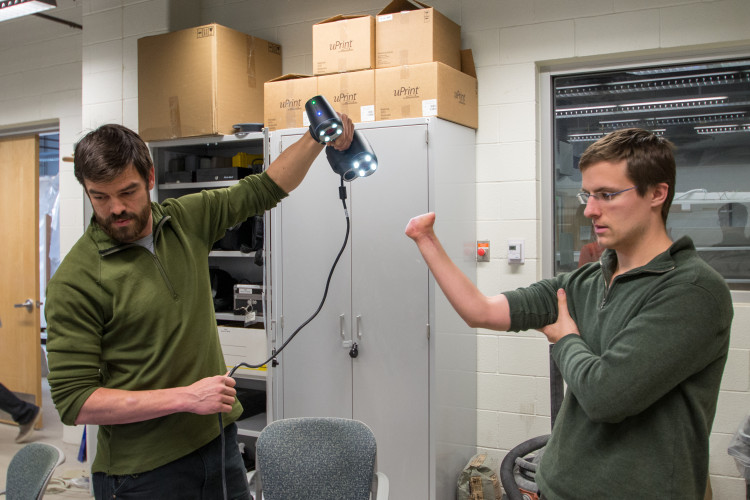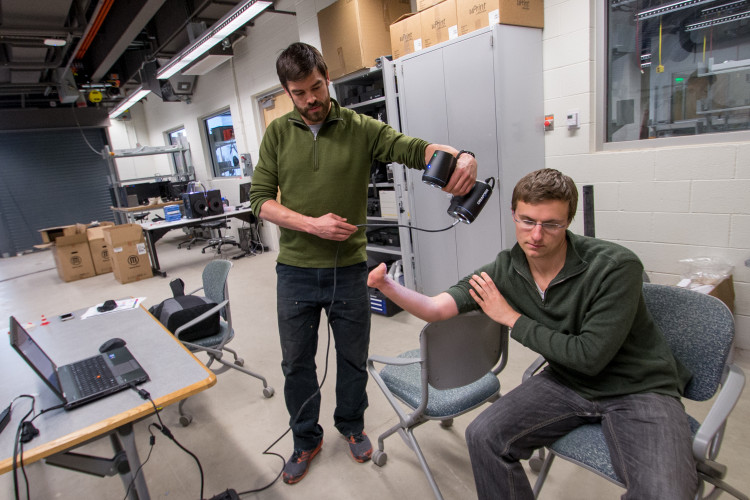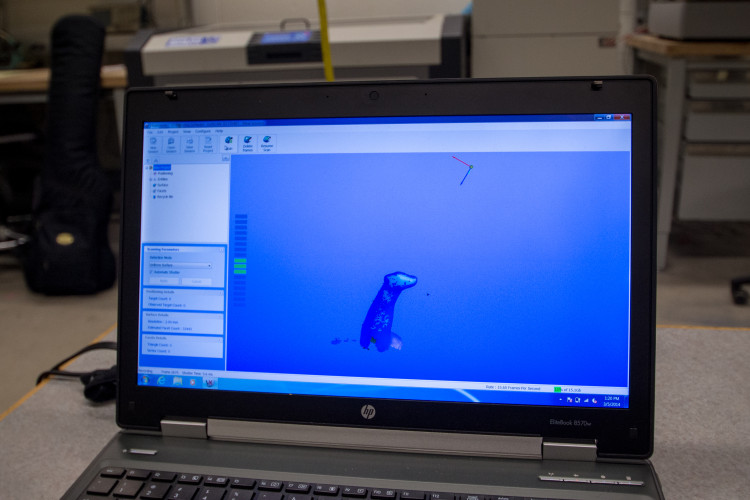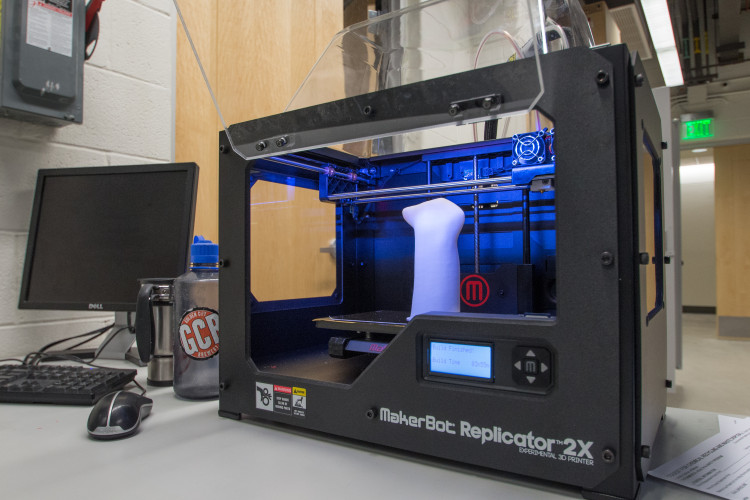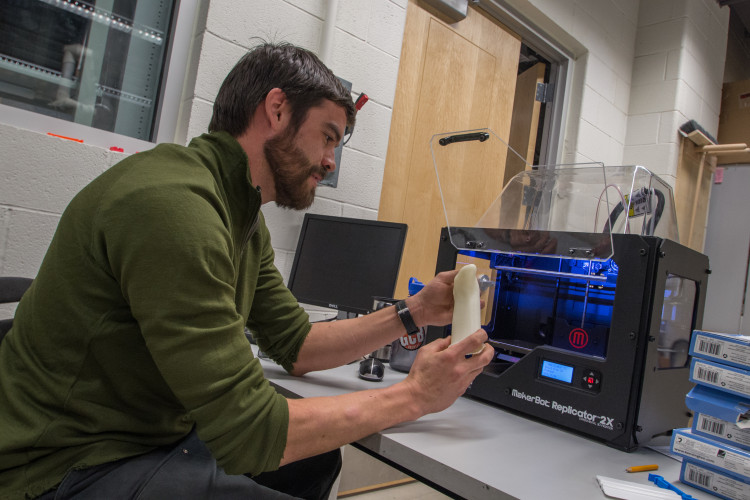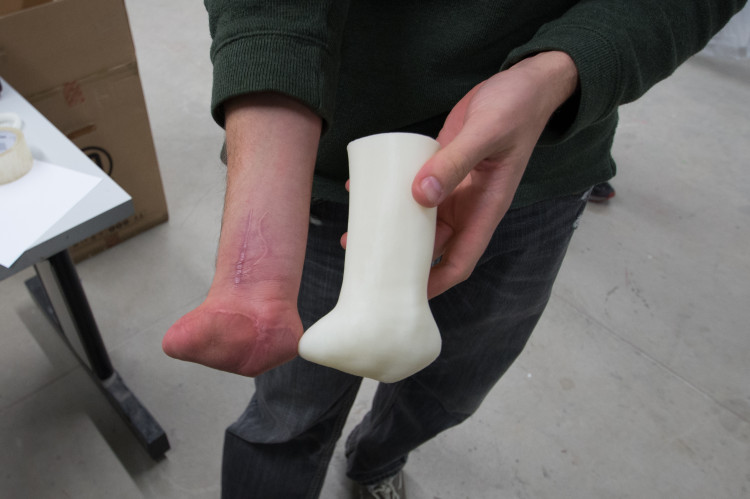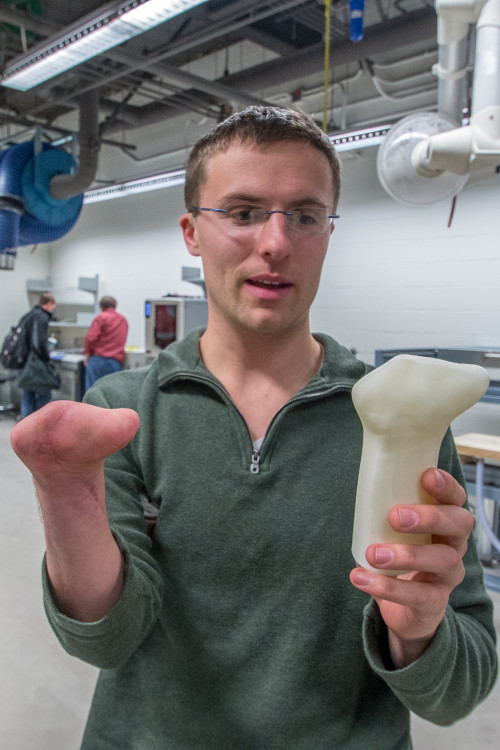My graduate student Jordan Pease makes his own prosthetics for activities such as cycling. He and his dad, Londell Pease (Londell took all of the photos in this post), usually wrap layers of fiberglass around Jordan’s arm to make the portion of the prosthetic that will attach to him. That process is imperfect and often creates prosthetics that are painful or difficult for Jordan to wear.
Thanks to the recent acquisitions of a hand-held 3D scanner from Creaform and six MakerBot Replicator 2X machines through Colorado School of Mines Tech Fee requests, the Design Lab (run by Professor Jered Dean) in the basement of Brown Hall is now open for business. Any Mines student may come in and work on projects for school or personal projects. Jordan is the first person to use the Design Lab to make his own prosthetic mold.
Brian Stack, one of the Design Lab’s student workers (left), and Jordan Pease (right) work with the Creaform 3D scanner to take accurate 3D geometry information from Jordan’s arm.
The scanner projects a light pattern onto the target of interest and uses two cameras to build a 3D model of the target.
This is the same scanner that several students in the DICE Lab used to scan the Blaster statue on the Mines campus and scan one of themselves.
This is a preliminary version of the 3D data that the Creaform 3D scanner and software generates.
Brian (right) goes for a second pass around Jordan’s arm to fill in holes on the 3D model.
After the Creaform software, the 3D data went through a toolchain of software that the Design Lab has put together with the help of John Steuben in the DICE Lab. The result was a file that could be printed on our MakerBot Replicator 2X machines. Jordan printed it in white ABS plastic.
Brian examining the completed print.
The result is a nearly perfect replica of Jordan’s arm right down to the scars. This mold will be a game-changer for Jordan’s ability to quickly make new prosthetics as his old ones wear out or break, or as he needs new prosthetics for new activities.
It’s impressive how accurate the 3D printed version of Jordan’s arm is. I’m looking forward to the next interesting student project to come down the pipeline in the Design Lab at the Colorado School of Mines.
This is a time lapse that Jordan’s dad took of a second print that they made (this time in red plastic). The print took a little over three hours and was compressed into one minute.

